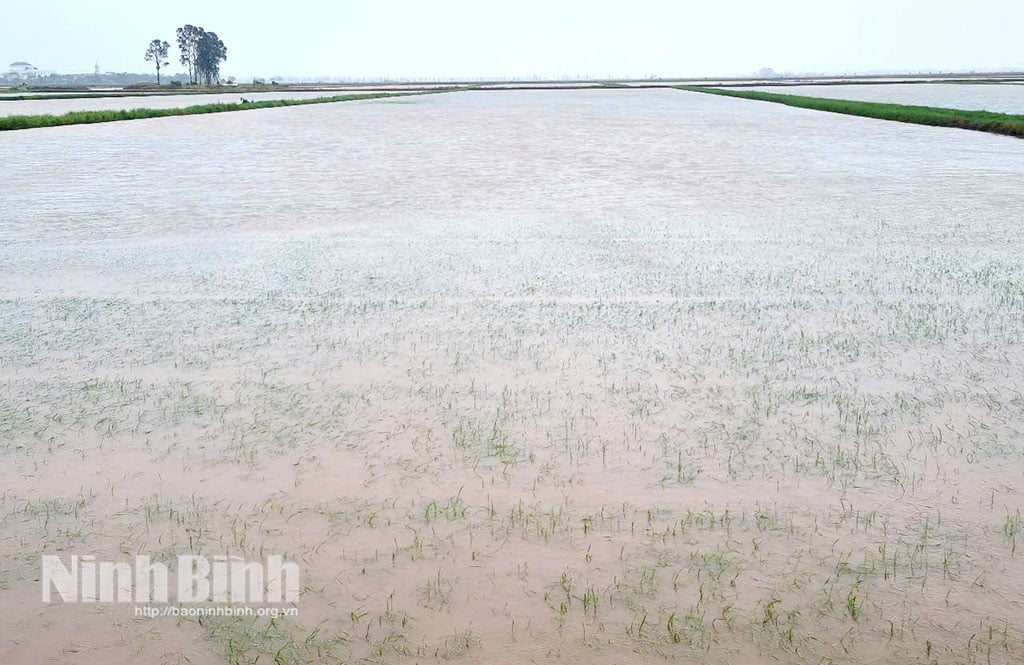
Many fields are submerged in water
According to the report of the Ninh Binh Province Hydrometeorological Station, storm No. 3 caused strong winds of level 7, gusts of level 10, along with widespread rainfall from 100 - 250mm, in some places over 250mm. As a result, as of 4:00 p.m. on July 22, the whole province had about 77,548 hectares of winter-spring rice and 783 hectares of summer-autumn vegetables affected. Alarmingly, of these, 66,780 hectares of rice were completely submerged, 7,345 hectares were lightly submerged (only the tips of the leaves were visible) and 3,423 hectares were deeply submerged (2/3 of the rice stalks).
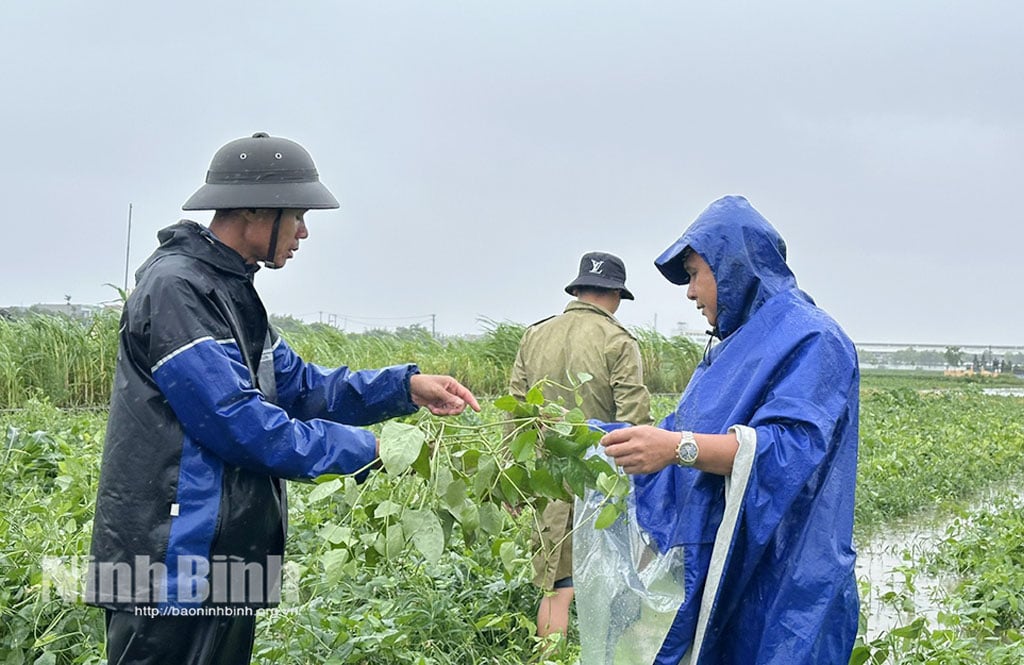
One of the areas severely affected by the flooding is Dong Thai commune, where more than 1,000 hectares of the locality's 1,700 hectares of rice and vegetables have been submerged in water. Ms. Nguyen Thi Len, Vice Chairwoman of Dong Thai Commune People's Committee, said that the flooded area is mainly newly planted rice, especially rice sown after July 10. Only the early-planted rice area in preparation for the winter crop has not been affected much.
We were present at Phu Lam Agricultural Cooperative and learned that 30.4 hectares of crops, mainly beans, sesame and medicinal plants (basil, mint) had also been flooded since last night, with an estimated 70% of the total crop area affected. Mr. Pham Van Nien, Director of the Cooperative, worriedly said: “The beans are ready to be harvested, and the sesame is only a month away, but... the rain is too heavy to handle. We are trying to clear the flow to drain the water as quickly as possible, but we still determine that a part of the crop area will be damaged.”
The worry is evident on the faces of farmers like Mr. Pham Van Loc, Dong Thon village, Dong Thai commune. With nearly 2 sao of green beans ready for harvest, Mr. Loc shared: “Crops cannot withstand water. If the sun comes up, they will all rot and cannot be harvested.”
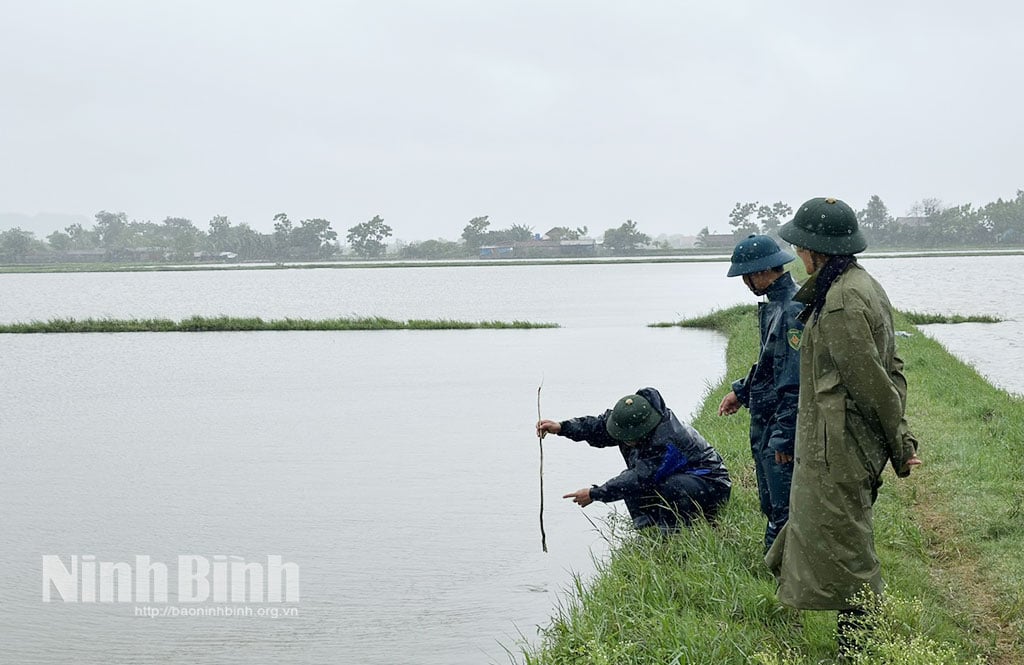
Similarly, in the communes of Phat Diem, Kim Son, Kim Dong, and Binh Minh, many newly sown and transplanted rice fields are submerged in water. The image of vast fields submerged in water is a great concern for farmers here.
Mr. Tran Anh Khiem, Chairman of Phat Diem Commune People's Committee confirmed: "The heavy rain that has lasted since last night has seriously affected people's lives. Immediately, the commune government mobilized machinery, equipment and human resources to urgently clear the flow of water in drainage channels, responding to localized flooding.
Mr. Khiem added that the water has basically receded in residential areas. However, the most worrying thing right now is that many newly planted rice fields are flooded, facing the risk of drifting and root rot if the water does not recede quickly. This is the stage when the rice is young and very sensitive to waterlogging, and can be completely damaged if soaked in water for just a few days.
Mobilizing all forces to save rice, vegetables, and protect production
According to information from the Department of Agriculture and Environment, up to now, the whole province has planted 110,620 hectares of rice (87% of the plan); Ha Nam (old) area alone has completed planting and shifted its focus to care. Summer-autumn vegetables have been planted on 12,350 hectares (80% of the plan).
To minimize damage, the province is directing localities to delimit and regulate water appropriately for each area. The province is currently operating 345 pumps at 110 pumping stations, along with 116 culverts under the dike and 19 culverts in the lake. The pumping stations are operated in rotation, with priority given to deep, low-lying areas. Inter-commune pumping stations and irrigation clusters coordinate smoothly according to the mechanism of "synchronous pumping and effective drainage" to avoid system overload.
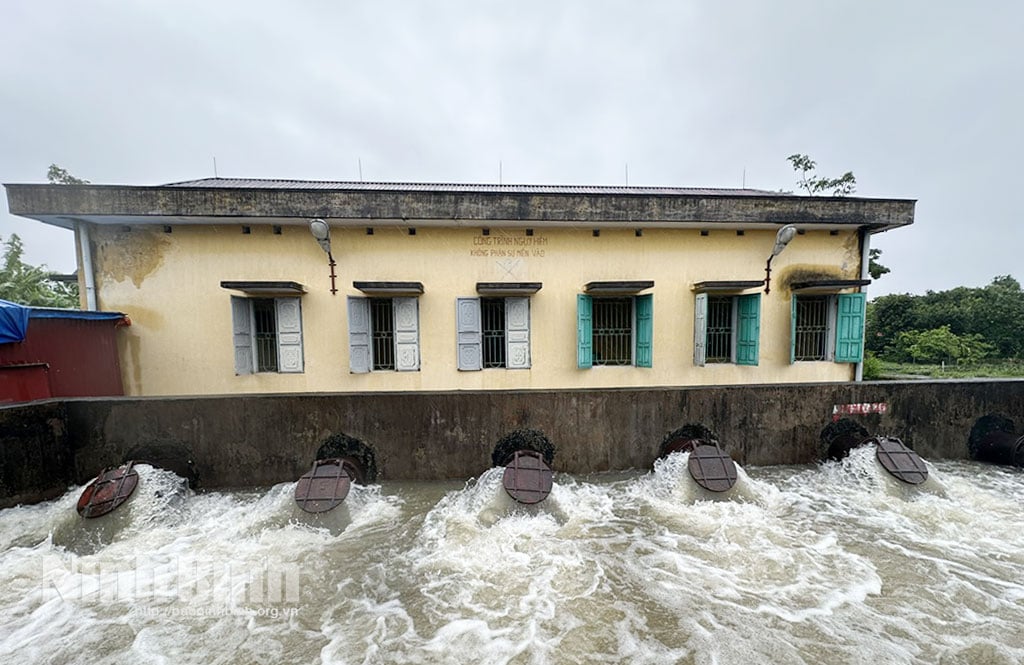
In Dong Thai commune, the government has directed cooperatives and farmers to urgently clear the flow, closely coordinate with irrigation companies to operate 8 pumping stations with 17 machine sets, with a capacity of up to 2400-4000 m³/h, operating at full capacity to drain the water. Phu Lam cooperative is also focusing on clearing the flow to minimize damage.
Irrigation companies in the area also proactively coordinate with cooperatives to organize dredging of canals, remove trash and duckweed from canals and drainage gates, ensuring smooth flow and fastest possible drainage. In addition, communes and wards also strengthen propaganda, continuously update weather forecast information, and instruct people on measures to prevent and combat flooding on the spot such as building embankments, building anti-overflow embankments, and clearing small flows in the fields.
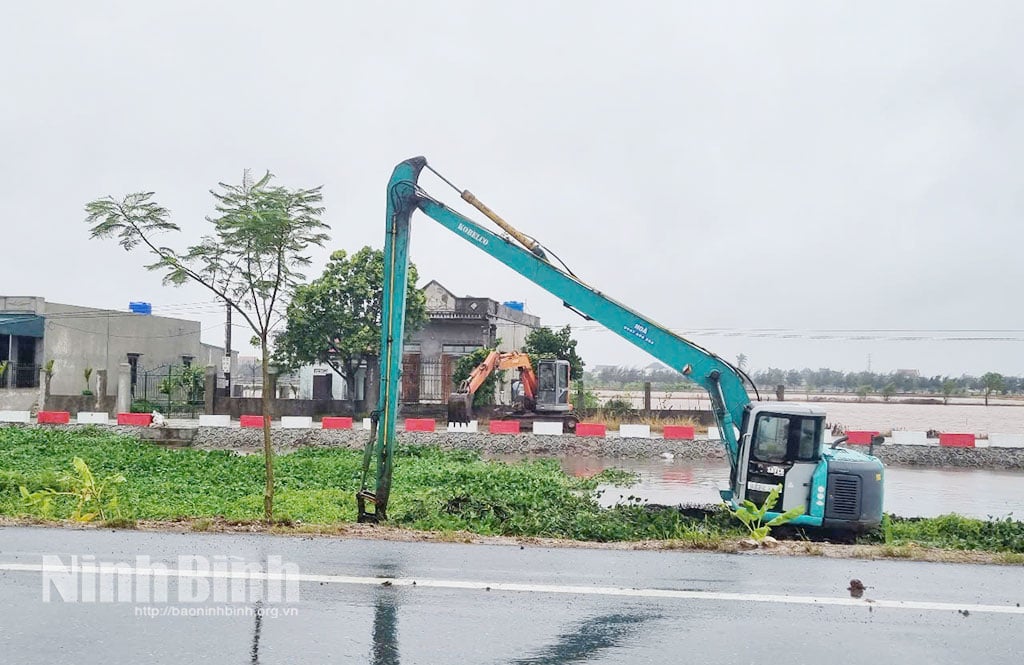
The Department of Agriculture and Environment regularly and continuously closely monitors the flood situation to promptly advise on solutions. Directs localities to mobilize all forces, means and machinery to prevent flooding of rice and crops, especially in low-lying areas and newly sown areas. Prepare short-term rice seeds as a reserve, organize care and protect the reserve seedlings until August 5, 2025, and be ready for disaster recovery work.
The flooding situation in Ninh Binh is still complicated, especially in low-lying areas along rivers and coasts. However, with the synchronous and urgent participation of the entire political system and the efforts of the people, Ninh Binh is racing against time to protect crops and minimize the damage caused by storm No. 3.
Source: https://baoninhbinh.org.vn/khan-truong-tieu-ung-cuu-lua-va-cay-mau-sau-bao-so-3-206158.htm



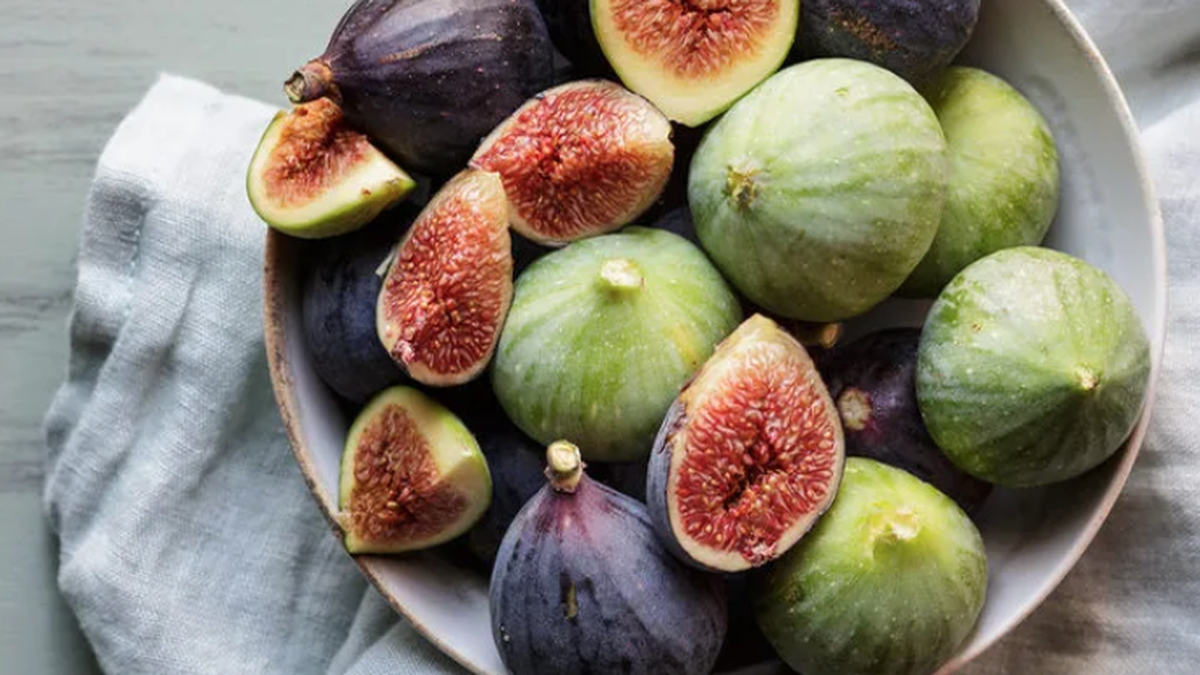



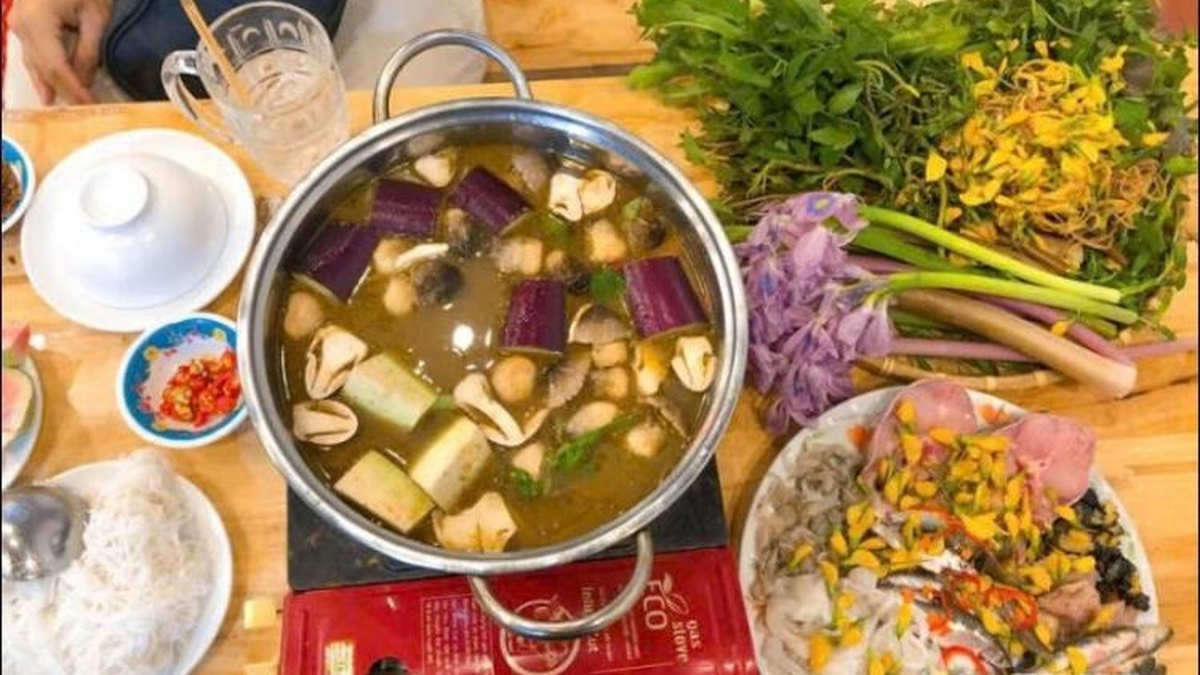
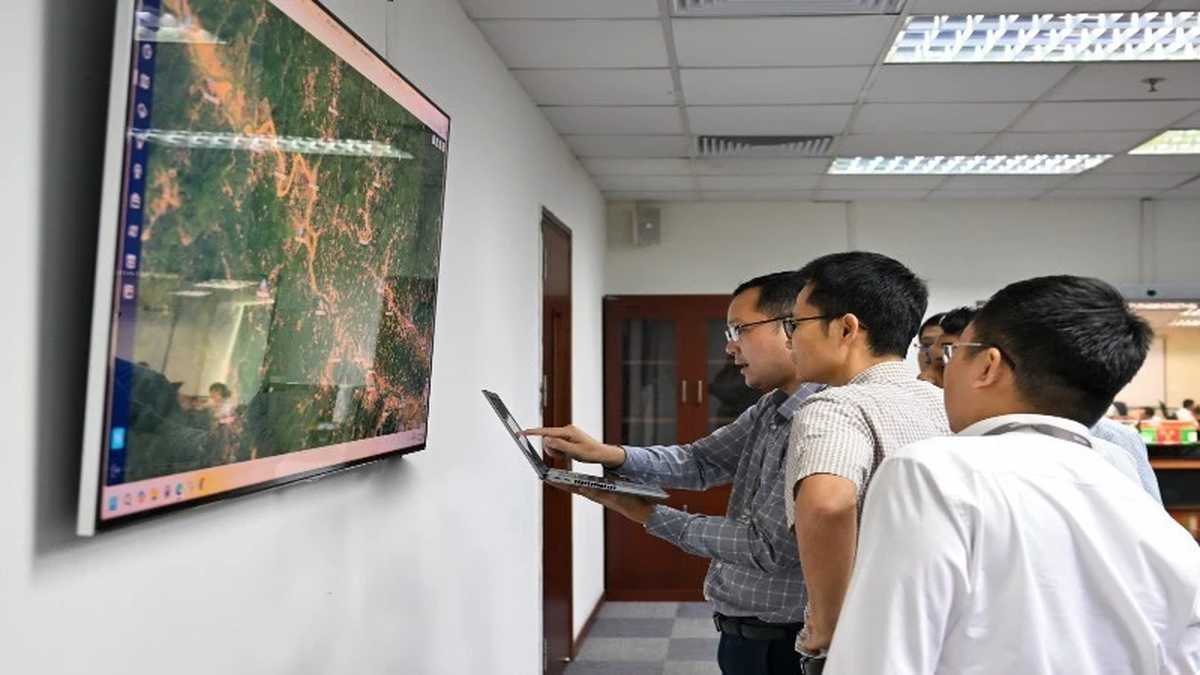
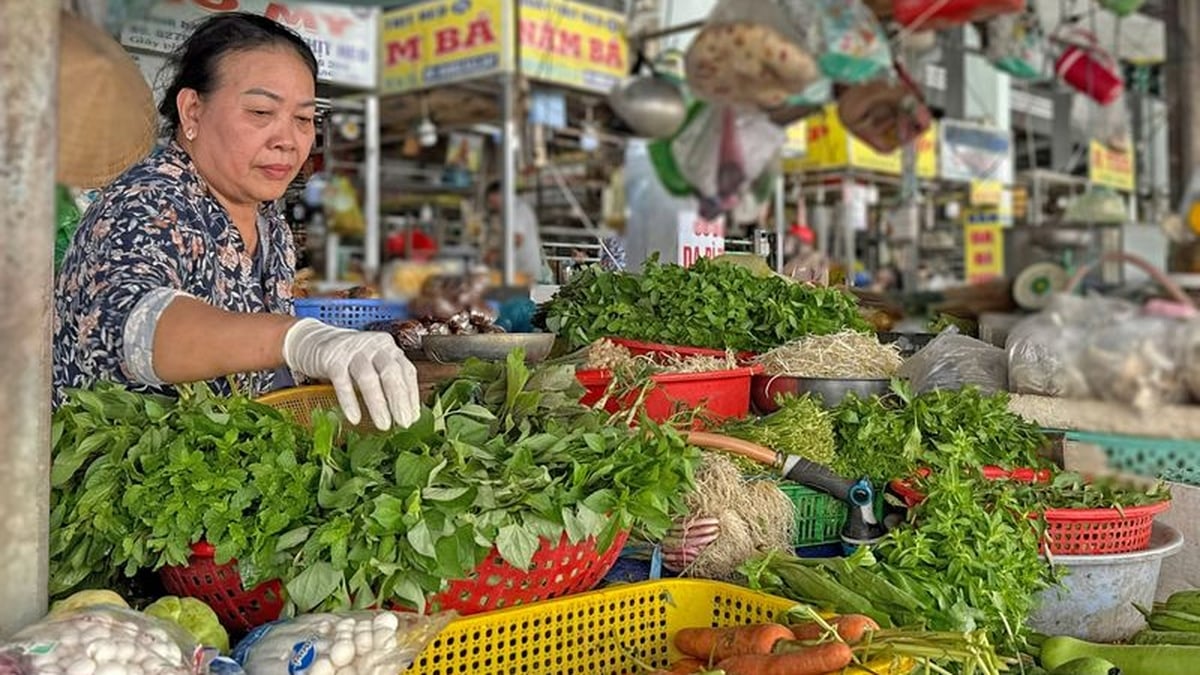
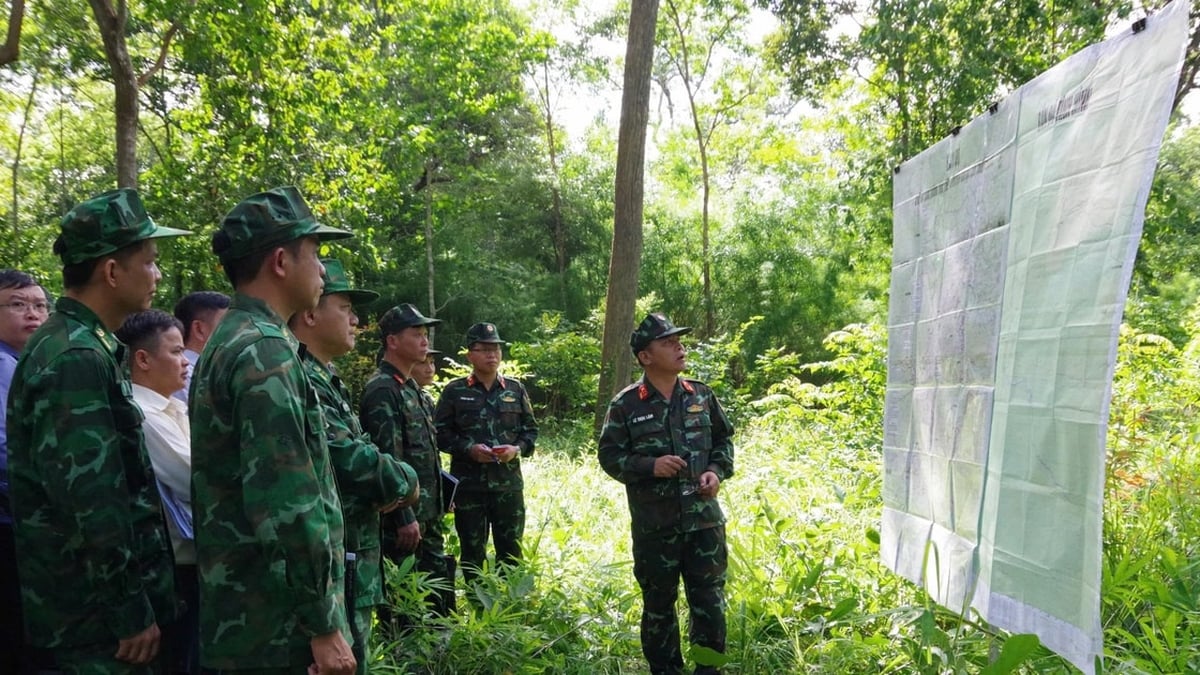
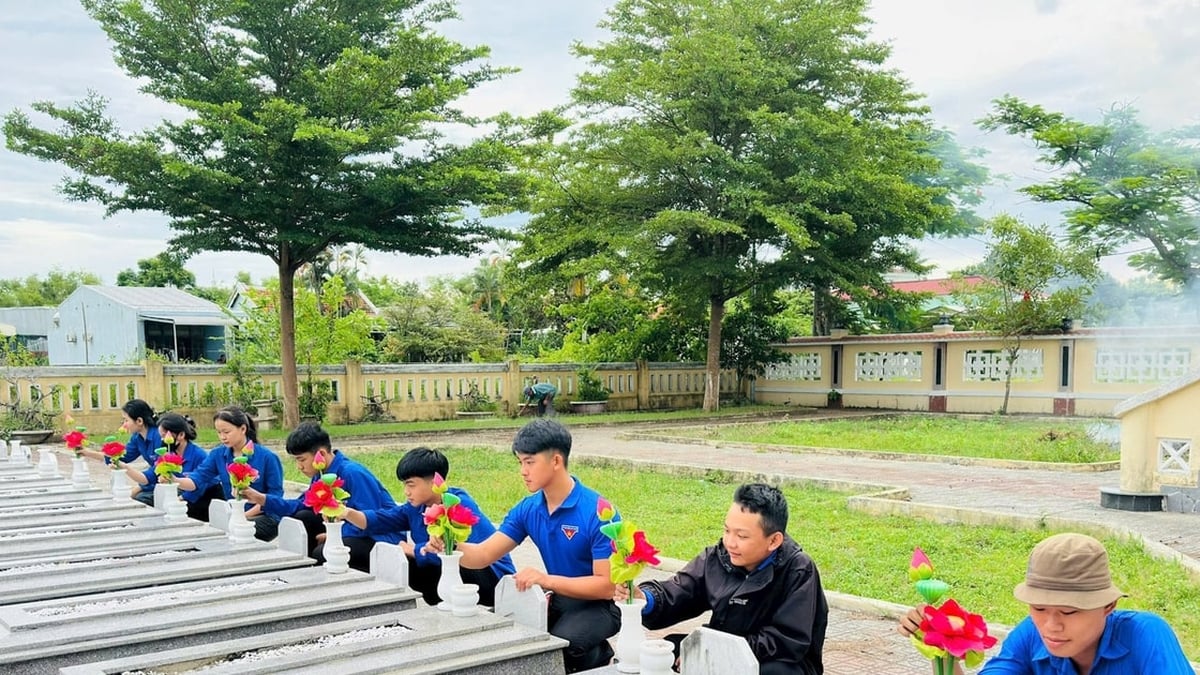














![[Infographic] Vietnam-Senegal traditional friendship](https://vphoto.vietnam.vn/thumb/1200x675/vietnam/resource/IMAGE/2025/7/23/4c96a604979345adb452af1d439d457b)





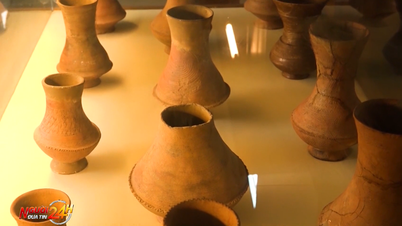



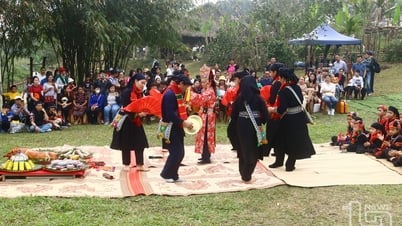
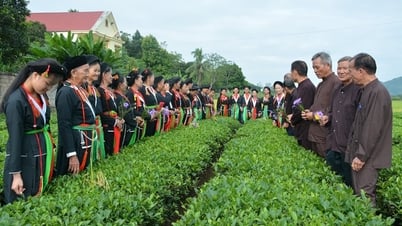




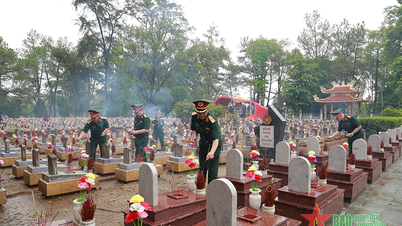












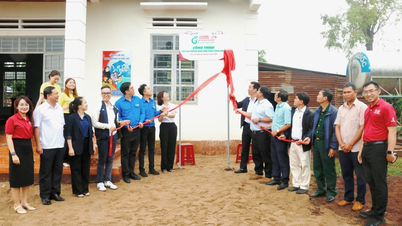

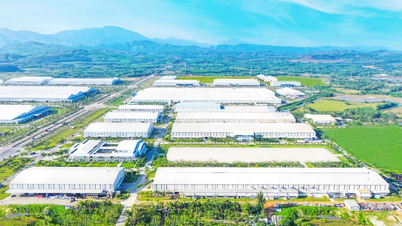
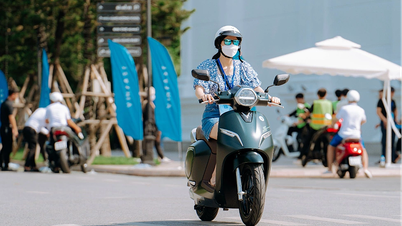




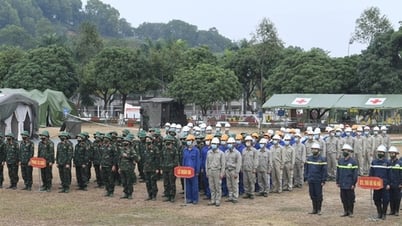







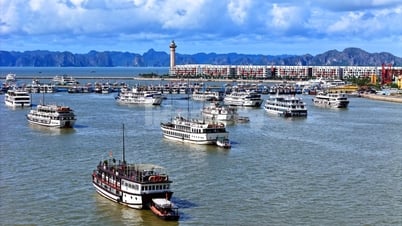





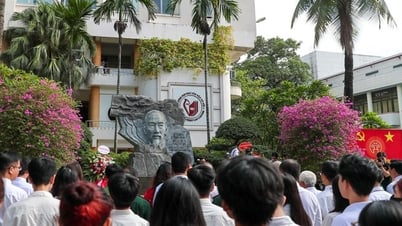












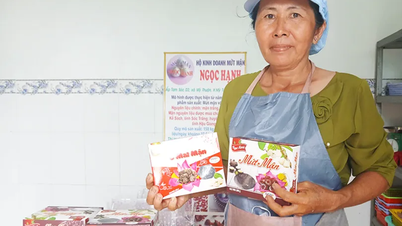

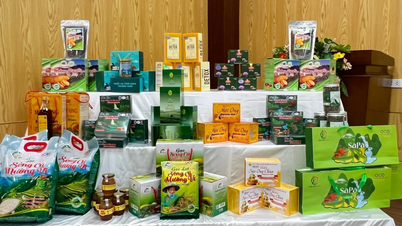



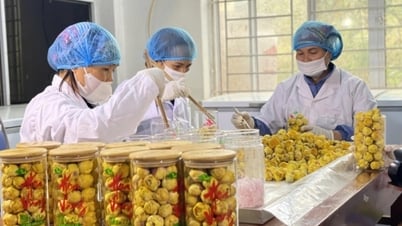









Comment (0)